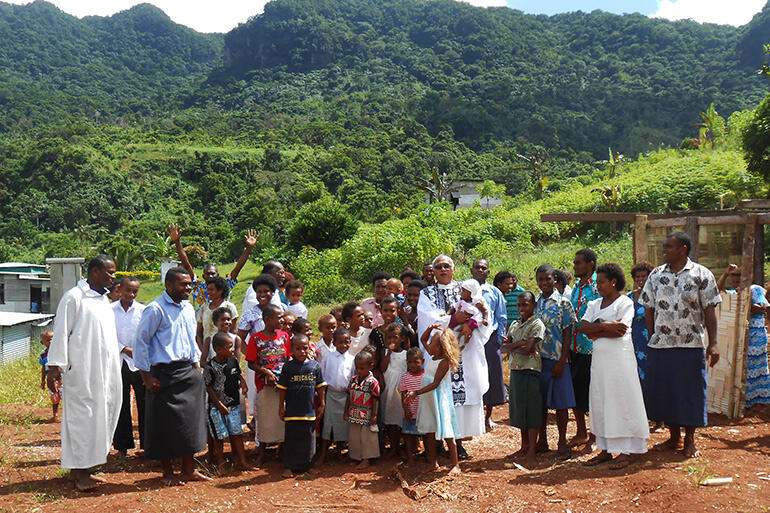
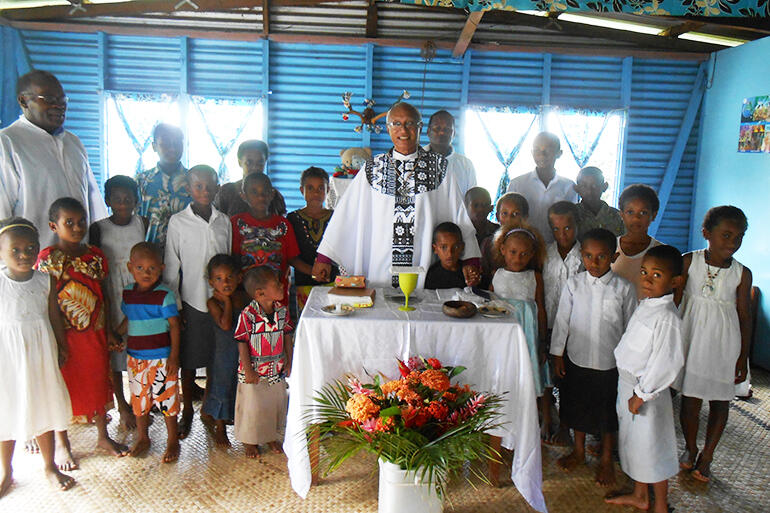
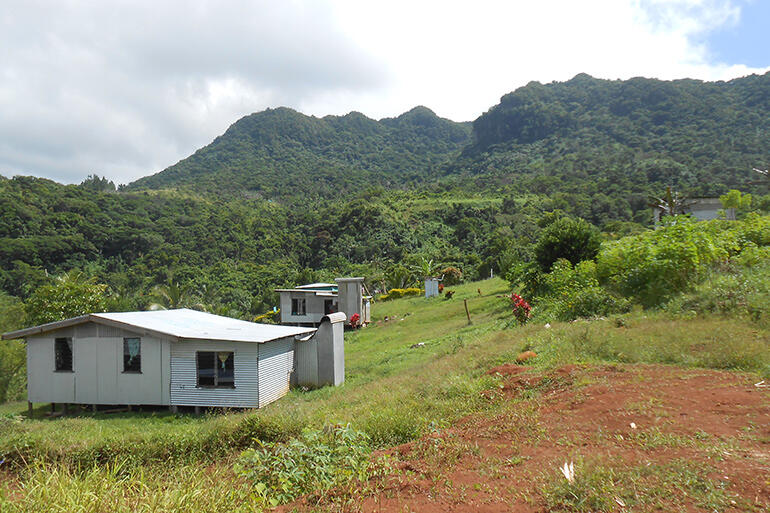
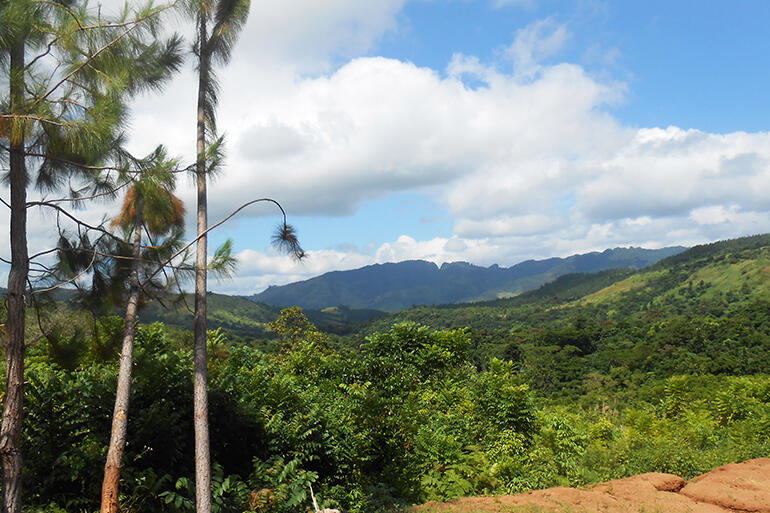
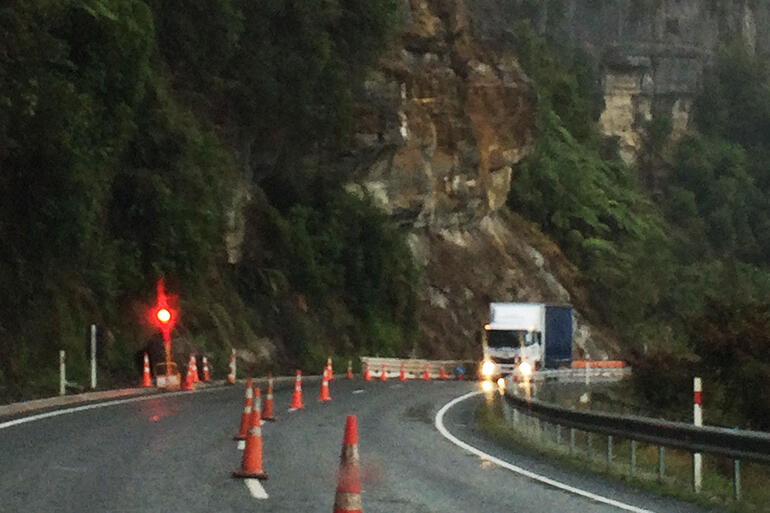
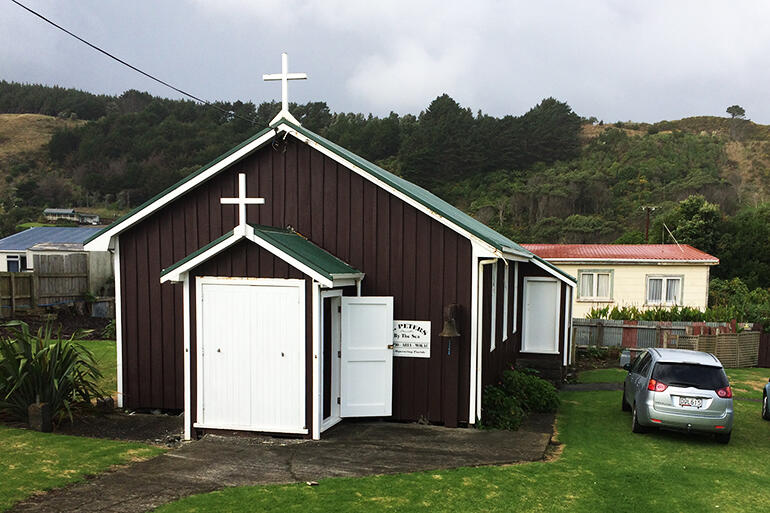
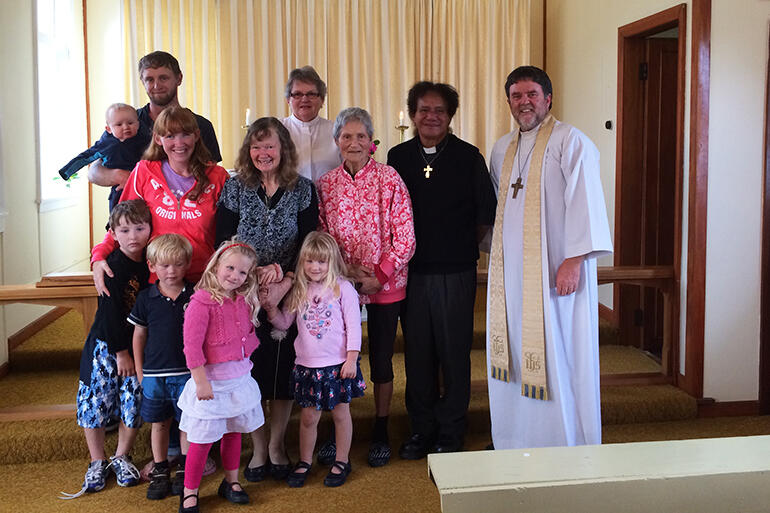
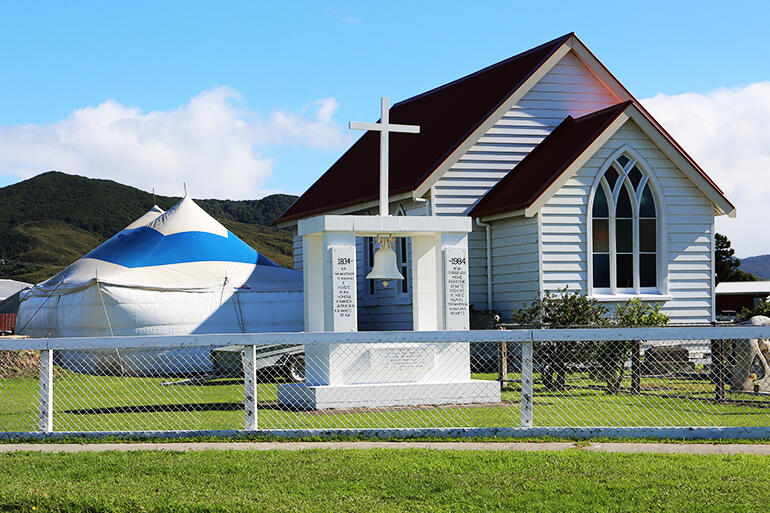
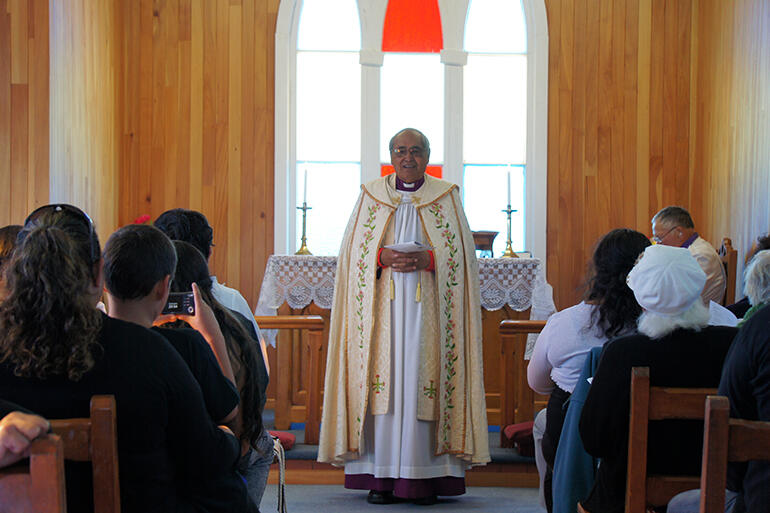
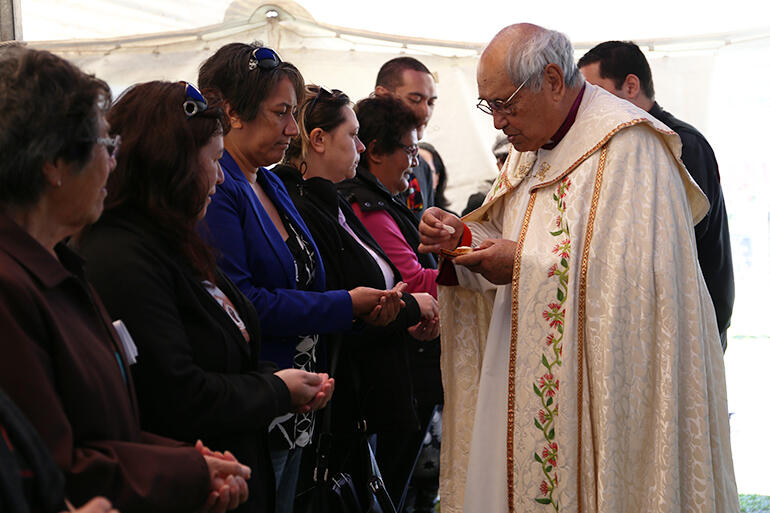
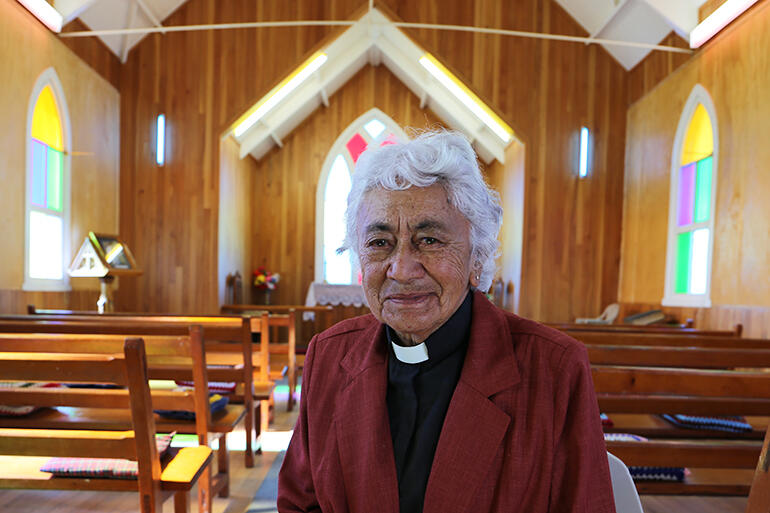
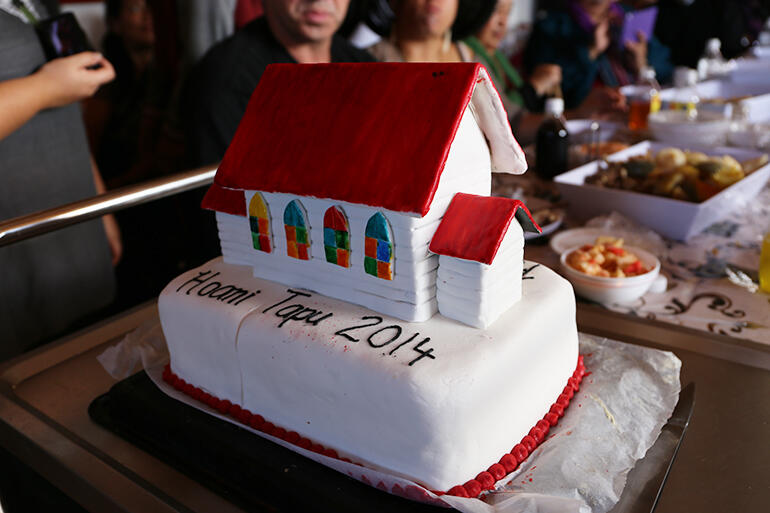
When Archbishop Philip Richardson pulled out of his New Plymouth driveway at 6:30am on Easter Day it was teeming.
He needed his car lights to cut through the slashing rain.
He was setting out on the two-hour drive to Te Kuiti, where he was to celebrate the first of three services on Easter Day.
He drove cautiously – there was plenty of debris on the isolated stretches of State Highway 3 – and just before Piopio, beneath the cliffs that tower above the highway there, the road was reduced to a single lane.
He felt his vulnerability at that spot, too: just a couple of weeks earlier, a rock the size of a small truck had crashed down from those cliffs and killed a passenger in a passing car. The highway was diverted for several days while workers toiled to make the road safe.
But when Archbishop Philip passed that spot on Easter morning, the rock had been rolled away.
So he was able to carry on to celebrate the resurrection in Te Kuiti, in Piopio itself – and on his way back to New Plymouth, in the tiny coastal community of Mokau, where he’d never stopped to worship before.
Off the beaten track
Each of our three Archbishops chose to celebrate Easter Sunday in out-of-the-way places.
Each chose to move away from their cathedrals – or their big churches – to celebrate resurrection in their heartlands. Each found surprises, too – and felt thumping pulses of life where, in earlier times, you might have seen only a flat line on the monitor.
Archbishop Brown spent the day at Rangitukia, which is 10km south of East Cape, close to the mouth of the Waiapu River.
He was there to rededicate the church of St John’s Rangitukia, which is a place dear to his heart.
It’s a church that was consecrated way back in 1906, and it’s one of the last fruits of the ministry of the first vicar of Waiapu, the Rev Mohi Turei.
He was one of the towering figures of 19th century Ngati Porou history. He’d spent the last years of his life paralysed, and supervised the construction of St John’s Rangitukia from his bed.
Archbishop Brown Turei had been whangai-ed by Rev Mohi Turei’s son Dick – and he carries the name ‘Brown’ from another of Mohi Turei’s sons, the first Rev Brown Turei.
Archbishop Brown had spent most of his Sunday School years at St John’s Rangitukia.
But in later years, St John’s Rangitukia had fallen into serious disrepair – partly because the people from those parts had drifted to the cities – and during the Wahine storm of 1968, St John’s Rangitukia had been knocked over on to its side.
But they'd yanked it back upright, and over the last few years Hoani Tapu, Rangitukia has been placed on new foundations (the Rev Brent Swann led a team of local folk who tackled that job) and fully restored to its simple beauty.
And on Easter Day, Archbishop Brown celebrated the resurrection of his old Sunday School, rededicated Hoani Tapu, Rangitukia to the glory of God – and commended resurrection life to his people there.
Little fish, from local streams...
Meanwhile, in Fiji, Archbishop Winston Halapua and his wife Rev Sue Halapua set off at dawn from Suva for a three-hour drive by 4WD vehicle into the hinterland of Viti Levu.
They were heading to a remote village called Maniava. For the last hour of their journey, they bounced along cart tracks, fording streams that are impassable after rain – and when they reached their destination, they were welcomed by a choir of local children.
Archbishop Winston celebrated the Eucharist in a house – he preached from the John 21 passage when the risen Christ calls Mary by name, and told his hosts that Jesus knew each of them by name. Then the visitors and their hosts walked up a hill to a clearing overlooking the village and its valley.
It’s a beautiful site, with a beautiful outlook – and that’s where the villagers intend building an Anglican church.
The villagers and their guests then headed back to Maniava to an Easter Day feast of dalo (taro) cassava, ferns – and tiny fish netted from the local streams.
St Peter's-by-the-Sea
And we’ll finish by reporting on the last stop from Archbishop Philip’s Easter Day journey.
In the 15 years since he was ordained Bishop in Taranaki he reckons he’s driven through Mokau hundreds of times, en route to places further north.
But on Sunday he pulled over there, to join the handful of faithful folk who worship at St Peter's-by-the-Sea, which is a co-operating parish serving Christians in Piopio, Aria and Mokau.
He was glad he made that stop, too.
“In these little rural communities,” he says, “you don’t get big numbers at services – but the ones who do come are full of life and commitment.”
Archbishop Philip had preached at the two earlier services in Te Kuiti and Piopio.
In Mokau, though, he just shared in a conversation about “the realities reflected in that passage from John 21.”
“Together we reflected on the transformation that took place after the disciples had had those encounters with the risen Christ….
“How they had been changed from frightened men, hiding behind locked doors, to people who were prepared to declare to the world that Christ had been raised from the dead.
“And we talked about the challenges that face us. What are we hiding from? What are the things that we are afraid to confront?
“Because the Resurrection tells us that there is nothing to be afraid of. And that we cannot avoid confronting those things which would deny, distort or diminish the love of God.”






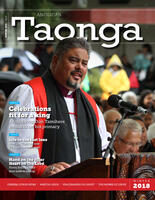
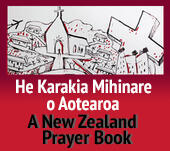



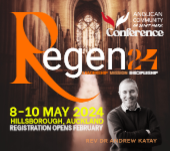





Comments
Log in or create a user account to comment.